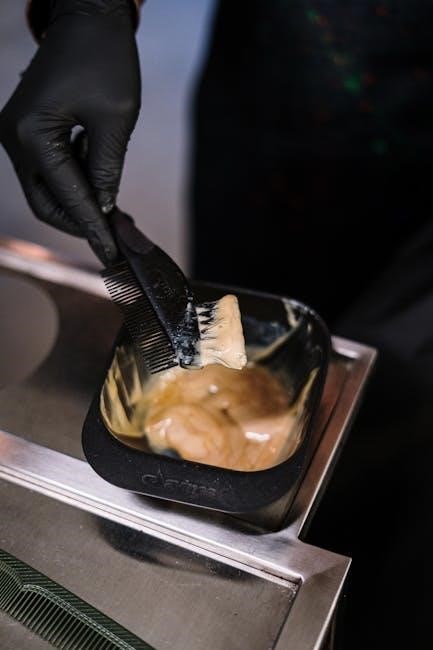Tie dye care instructions are essential for maintaining vibrant colors and preventing damage to fabrics, ensuring your newly dyed items remain beautiful and long-lasting with proper washing and drying techniques always.
Understanding the Importance of Proper Care
Tie dye care instructions are crucial for maintaining the quality and appearance of your dyed items. Proper care ensures that the colors remain vibrant and the fabric stays intact. Understanding the importance of proper care involves recognizing the potential risks of improper washing and drying techniques. When you follow the right care instructions, you can prevent damage to the fabric and maintain the color intensity. This is especially important for tie-dye items, as the dye can be sensitive to certain washing and drying methods. By taking the time to understand the importance of proper care, you can enjoy your tie-dye items for a longer period. Additionally, proper care can also help to prevent color bleeding and fading, which can ruin the appearance of your dyed items. Overall, understanding the importance of proper care is essential for getting the most out of your tie-dye items and keeping them looking their best.
Pre-Washing and Preparation
Pre-washing removes sizing and oils from fabric, preparing it for dyeing with proper techniques always.
Removing Sizing and Oils from Fabric
Removing sizing and oils from fabric is a crucial step in the tie dye process, as it ensures that the dye adheres evenly and consistently. This step is often overlooked, but it is essential for achieving the desired results. According to the instructions provided with Tulip Tie-Dye kits, it is recommended to use hot water and Dyers Detergent to remove any oils, dirt, or other substances that may resist the dye. By doing so, the fabric is properly prepared for the dyeing process, allowing the colors to penetrate deeply and evenly. The removal of sizing and oils from fabric also helps to prevent any unwanted textures or patterns from appearing on the final product. By following this simple step, individuals can ensure that their tie dye projects turn out vibrant and beautiful, with minimal risk of error or disappointment, and a professional finish always.

First Time Washing Instructions
Wash dyed items separately in cold water with mild soap to preserve colors and prevent fading always using gentle cycles.
Using Cold Water and Mild Laundry Soap
To maintain the vibrant colors of your tie-dye items, it is essential to use cold water and mild laundry soap when washing them for the first time. This gentle approach helps prevent the colors from fading or bleeding. The cold water setting on your washing machine is the best option, as hot water can cause the colors to run and fade quickly. Additionally, using a mild laundry soap that is specifically designed for washing colored or delicate items is crucial. Harsh detergents can strip the colors from the fabric, leaving them dull and faded. By using cold water and mild laundry soap, you can help preserve the colors and ensure your tie-dye items remain vibrant and beautiful. This is especially important for the first wash, as it sets the tone for the item’s future washing and care. Proper care from the start is key to maintaining the item’s appearance.

Machine Washing vs Hand Washing
Machine washing is generally recommended for tie dye care, except for delicate fabrics like silk and rayon, which are safer to hand wash always with cold water and mild soap.
Choosing the Best Method for Your Fabric
To choose the best washing method for your tie-dye fabric, consider the type of fabric and its sensitivity. Machine washing is suitable for most fabrics, but delicate ones like silk and rayon require hand washing. The Internet provides guidance on washing tie-dye fabrics, emphasizing the importance of cold water and mild soap. When deciding between machine and hand washing, think about the fabric’s texture and potential shrinkage. For example, cotton and rayon can be machine washed, while silk and wool are better hand washed. Additionally, consider the color intensity and potential bleeding, as some fabrics may require separate washing to prevent color transfer. By choosing the right washing method, you can preserve the vibrant colors and texture of your tie-dye fabric, ensuring it remains beautiful and long-lasting. Proper care instructions are essential for maintaining the quality of your tie-dye items, and the Internet offers valuable advice on how to wash and care for these unique fabrics.

Preventing Color Bleeding and Fading
Preventing color bleeding requires cold water and mild soap to preserve tie-dye colors and prevent fading always during washing and drying processes effectively.
Following the Manufacturer’s Instructions
When it comes to tie dye care instructions, following the manufacturer’s instructions is crucial for achieving the best results. The manufacturer’s instructions provide specific guidance on how to care for the dyed fabric, including washing and drying techniques. It is essential to read and follow these instructions carefully to prevent damage to the fabric and to ensure that the colors remain vibrant. By following the manufacturer’s instructions, you can help prevent color bleeding and fading, and keep your tie-dye items looking their best. The instructions may include recommendations for washing in cold water, using mild soap, and avoiding exposure to direct sunlight. Additionally, the manufacturer’s instructions may provide guidance on how to remove stains and spills, and how to store the dyed items to prevent damage. By following these instructions, you can help extend the life of your tie-dye items and keep them looking great for years to come. Proper care and maintenance are key to enjoying your tie-dye items.

Caring for Specific Fabric Types
Cotton, rayon, and silk fabrics require special care instructions always.
Special Considerations for Cotton, Rayon, and Silk
Cotton, rayon, and silk fabrics have unique properties that require special care when it comes to tie dye. For cotton, it’s essential to use hot water and a mild detergent to remove any impurities that may affect the dye. Rayon, on the other hand, requires a bit more gentle care, as it can be prone to shrinkage. Silk, being a delicate fabric, needs to be hand washed in cold water with a mild soap to prevent damage. When washing these fabrics, it’s crucial to avoid using harsh chemicals or abrasive materials that can cause fading or discoloration. By following these special considerations, you can ensure that your tie-dye creations on cotton, rayon, and silk fabrics remain vibrant and long-lasting. Additionally, it’s recommended to avoid machine washing or drying, especially for silk and rayon, to prevent any damage or shrinkage. With proper care, these fabrics can be enjoyed for a long time, and their unique textures and properties can be preserved. Proper storage and handling are also essential to maintain the quality of the fabric.